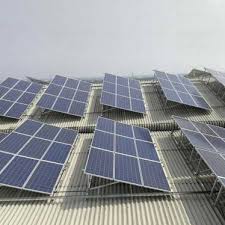Solar Rooftop Subsidy
The cost of a rooftop solar subsidy does not directly fall on the consumer but is instead provided by the government or local authorities to reduce the cost of installing solar panels. However, the value or amount of the subsidy can vary depending on the region, country, and specific solar incentive programs. Here's how it typically works:
1. Percentage of
System Cost
In many cases, rooftop solar subsidies cover a percentage of the total cost of the solar system installation.
Typical subsidies range from 20% to 40% of the installation cost.
For example, if the total cost of a rooftop solar system is $10,000, and the subsidy is 30%, the government might cover $3,000, leaving the consumer to pay $7,000.
2. Fixed Subsidy
Amount
Some regions offer fixed subsidy amounts per kilowatt (kW) installed.
For example, a government might offer a subsidy of $200 to $500 per kW of installed solar capacity.
If a homeowner installs a 5 kW system, they could receive a subsidy of $1,000 to $2,500, depending on the program.
3. Tax Incentives and
Rebates
Some countries, such as the U.S., provide tax credits instead of upfront subsidies. The Investment Tax Credit (ITC) allows homeowners to claim a percentage of the solar installation cost on their taxes (currently 30% in the U.S.). This works similarly to a subsidy but is claimed when filing taxes.
Other regions may offer rebates after installation, where a portion of the system cost is refunded, which can also reduce the overall cost.
4. Additional Grants
or Low-Interest Loans
In addition to direct subsidies, some governments provide grants or low-interest loans to make rooftop solar installations more affordable, which also indirectly lowers the effective cost for consumers.
Factors Influencing
the Subsidy Amount:
Location: Different countries, states, or provinces have varying subsidy programs and incentive amounts.
System Size: Larger rooftop solar installations may be eligible for higher subsidy amounts.
Energy Production: Some subsidies are based on the expected energy production rather than the system size.
Income Level: Some regions provide higher subsidies for low-income households to improve solar access.
Example Subsidy
Programs:
India: The government provides a subsidy of around 40% for rooftop solar installations up to 3 kW, and 20% for systems above 3 kW.
Conclusion:
The cost of a rooftop solar subsidy to the homeowner depends on the percentage or fixed amount provided by the local government. It can significantly reduce the upfront cost of installing a solar system, making solar energy more accessible and affordable. The actual amount varies based on location, system size, and government programs.
.jfif)
.jpg)


Comments
Post a Comment